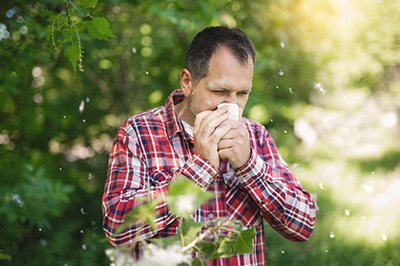Is It the Sniffles or Something Worse? Make a Plan!
“What’s that? You’re sick?” My voice sharpened with concern as I spoke with my daughter on the phone. I had been anticipating a visit with her in Ottawa for months, but this news could mean my trip was off. I didn’t want to get sick, but I especially needed to protect my parents, who live in a long-term care facility, from illness when I visited them upon my return. “Are you sure it’s not COVID‑19?” I continued: “Did you test?”
“I’m sure it’s not, Mom. It’s nothing, really, just a little cold. I was tired yesterday at school and today, my nose is a bit runny. It will probably be gone by tomorrow.”
Later that day, she called me back with the news that she had tested positive for COVID‑19. COVID‑19 now often produces cold-like symptoms, which are certainly less severe than those of the original disease. Experts say it’s because most of us now carry the antibodies, and that current variants of SARS‑CoV‑2 that causes it can produce a milder disease.1 Testing told us this was COVID‑19, but otherwise it can be a mystery as to what might be causing your “cold” symptoms. Consider allergies, for example…
 An allergic reaction requires a specific trigger, such as exposure to mold, dust, pollens, etc. A respiratory allergy can cause watery eyes, runny nose, sneezing, and—if asthma is also present—wheezing or coughing. When the trigger is removed, the worst of the attack is usually over. Allergies tend to be seasonal and fairly predictable. They are not contagious.
An allergic reaction requires a specific trigger, such as exposure to mold, dust, pollens, etc. A respiratory allergy can cause watery eyes, runny nose, sneezing, and—if asthma is also present—wheezing or coughing. When the trigger is removed, the worst of the attack is usually over. Allergies tend to be seasonal and fairly predictable. They are not contagious.
A severe allergy attack, causing anaphylaxis, is a medical emergency, but for most people, allergy symptoms are mild and treated at home. An allergy does not cause a fever, muscle aches, or nausea and vomiting.2
If you are not sure that it is an allergy, then it is most likely a virus. There are around 270 viruses that can make us sick.3 At times, bacteria and fungi can cause cold-like symptoms too, but viruses are much more likely than either of these to be the cause of the illness.4
Some of the more common viruses include the rhinovirus, which causes the common cold, and the respiratory syncytial virus (RSV). The Government of Canada website states that in healthy adults, “RSV usually causes a mild illness with cold-like symptoms.” In the very young and elderly, however, the disease can be more severe.5 There are also various influenza (“flu”) viruses, which are usually seasonal and have more severe symptoms.
These days, it doesn’t really matter what type of virus you have, because the advice for dealing with all of them is the same. The keys to recovery are monitoring your symptoms, resting, and hydrating. If your symptoms develop beyond that of a “mild cold” and include fever, headache, bone pain, and/or nausea or vomiting, contact a health-care practitioner.
The groups that suffer the most from viruses are the very young, the elderly, those in a group-living situation, the immunocompromised, and people with serious underlying health issues. These groups may need medical treatment or hospitalization. The Centre for Disease Control website states: “Most deaths from respiratory viruses occur in people older than 65, with risk increasing sharply with advancing age.”6
In fact, older people can even die from the rhinovirus, so it is extremely important not to visit them if you are sick. Infection from that common cold can lead to more serious illness, pneumonia, hospitalization, and even death in an older person.7
This means that, in addition to managing our own symptoms, we have an added responsibility to develop a plan to prevent the transmission of the virus. To everyone’s surprise, after being warned of the probability of a double flu/COVID‑19 pandemic in 2021, there was actually a much lower incidence of influenza and pneumonia. This was later attributed to greatly reduced transmission due to masking, handwashing, and distancing.8
 The new recommendations from the Center for Disease Control (CDC) to reduce transmission of a virus are as follows:
The new recommendations from the Center for Disease Control (CDC) to reduce transmission of a virus are as follows:
- Stay home and away from others until you are fever-free for at least 24 hours and your symptoms are improving.
- For the next five days, wear a mask around others, distance, gather outside or in well-ventilated areas, and clean your hands and surfaces frequently.9
I made the decision to go ahead with my trip. Fortunately, my daughter’s case of COVID‑19 was very mild, and her symptoms were gone by the time we met up. Since COVID‑19 can still be contagious for ten days or more after the first symptoms,10 we made a plan based on the CDC recommendations.
For the first few days when we were indoors, we both wore N95 masks. We ate our meals outside and spent most of our time walking or sitting outdoors, spaced apart. The hardest part for me was not hugging my daughter until we said goodbye.
I am glad I didn’t cancel the trip. All our efforts were worth it, because I had a great visit, didn’t get sick, and kept my parents safe!
 Wendy Presant, RHNC, CFMP
Wendy Presant, RHNC, CFMP
With a background in nursing, naturopathic, and functional medicine, Wendy Presant is currently registered as a health-and-nutrition counsellor. She provides virtual coaching services to individuals looking to optimize their health.
naturalcoachathome.care
References
1. Thompson, D. “Today’s COVID is increasingly looking like a cold or flu.” US News. https://www.usnews.com/news/health-news/articles/2023-09-21/todays-covid-is-increasingly-looking-like-a-cold-or-flu. 2023‑09‑21.
2. Streaker, J. “Allergies or a contagious virus? Here’s how to tell the difference.” Tallahassee Memorial Health. https://www.tmh.org/healthy-living/blogs/healthy-living/allergies-or-a-contagious-virus-heres-how-to-tell-the-difference. 2022‑04‑04.
3. Forni, D., R. Cagliani, M. Clerici, and M. Sironi. “Disease-causing human viruses: Novelty and legacy.” Trends in Microbiology, Vol. 30, No. 12 (2022): 1232–1242.
4. [No authors listed.] “What is the difference between bacterial infections and viral infections?” Franciscan Health. https://www.franciscanhealth.org/community/blog/virus-or-bacteria-causing-illness. 2022‑09‑19.
5. [No authors listed.] “Respiratory syncytial virus (RSV): Symptoms and treatment.” Government of Canada. https://www.canada.ca/en/public-health/services/diseases/respiratory-syncytial-virus-rsv.html. Updated 2023‑10‑03.
6. [No authors listed.] “Respiratory viruses and older adults.” Centers for Disease Control and Prevention. https://www.cdc.gov/respiratory-viruses/risk-factors/older-adults.html. 2024‑09‑26.
7. Wick, J.Y. “Rhinovirus in the elderly: The commonest of colds.” Pharmacy Times. https://www.pharmacytimes.com/view/rhinovirus-in-the-elderly-the-commonest-of-colds. 2015‑01‑09.
8. Nwosu, A., L. Lee, K. Schmidt, S. Buckrell, C. Sevenhuysen, and C. Bancej. National Influenza Annual Report, Canada, 2020–2021, in the global context. Canada Communicable Disease Report, Vol. 47, No. 10 (2021): 405–413.
9. Rosen, A. “Virologist explains the CDC’s new COVID isolation guidance.” Johns Hopkins. Bloomberg School of Public Health. https://publichealth.jhu.edu/2024/virologist-explains-the-cdcs-new-covid-isolation-guidance. 2024‑03‑05.
10. [No authors listed.] “Symptoms, transmission and treatment (COVID-19)” Gouvernement du Québec. https://www.quebec.ca/en/health/health-issues/a-z/2019-coronavirus/symptoms-transmission-treatment. 2023‑10‑06.

 Stores
Stores